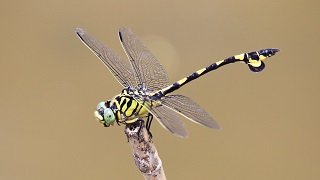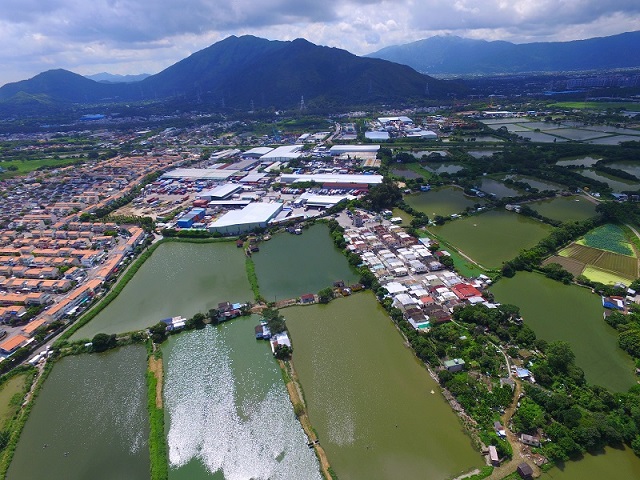Ecological value
Most fishponds in Hong Kong are either designated as “Ramsar sites” or classified as “wetland conservation areas” or “wetland buffer areas” by the Town Planning Board. This large area of fishponds forms a natural barrier in north-west New Territories, serving as a buffer against the rapid development and pollution. It is also a man-made wetland with great ecological value.
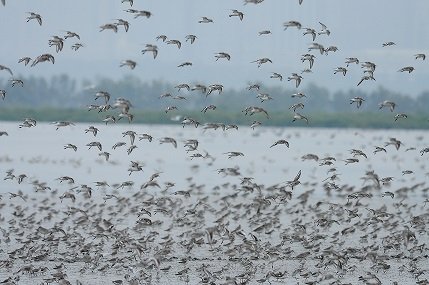
Curlew sandpipers in Mai Po
Hong Kong is located on the “East Asia – Australia Flyway”. Every year from September to April, the Deep Bay wetland attracts more than 50 thousand waterbirds of more than 160 species. During pond clearing, fish farmers provide abundant food to the migrating birds. Fishponds are man-made wetland**. The fish farmers have to reduce the water level in the ponds for harvesting. At high tide, the sea level along the mud flat is too deep for water birds to feed. The shallow fishponds attracts many migrating, wintering or resident waterbirds such as Ardeidae, Charadriidae, Scolopacidae and Threskiornithidae families to feed on the low value fish left behind after harvesting. When the ponds are drained and dried, Ardeidae and Charadriidae birds can feed on the exposed muddy pond bottom.
On the other hand, the pond bund covered with vegetation provides hiding places for birds of the Rallidae family. Different types of kingfishers, starlings, cormorants and raptors are also frequent visitors to fishponds. Apart from birds, fishponds provide roosting and breeding ground for a multitude of living organisms including amphibians, reptiles, mammals and insects (dragon flies, fireflies etc.) and are place of great biodiversity and ecological value. As marine resources diminish with over exploitation and pollution, fishpond provide a large quantity of edible fish, reducing our demand on wild fish resources.
Cultural and educational value
Pond fish culture is part of the history and culture of Hong Kong. It is especially significant in the development of villages in the New Territories. Maintaining pond fish culture is beneficial as a means for the local community to learn about the history of the fishery industry and our cultural heritage. Furthermore, fishponds are good topics for research and education. Through field trips, school children can experience the fishpond environment and study the effects of changes in land use and economic situation. Pond fish culture is of significant value for academic research in ecology, aquaculture and anthropology.
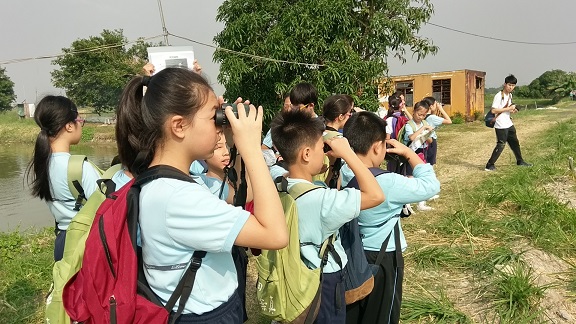
School children watching birds with binoculars during a visit to study pond fish culture
Scenic value
Fishponds in the Nam Sang Wai and Tai Sang Wai area are frequented by both photographers and the general public for their unique and spectacular scenery.
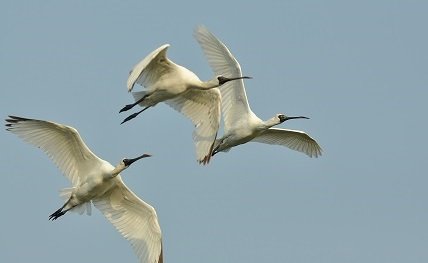
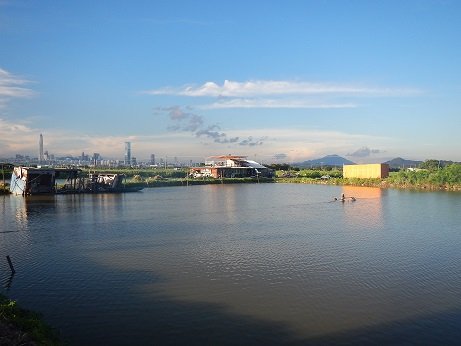

Scenery of fishponds at Lut Chau, next to Tai Sang Wai
Flood mitigation
Extended area of fishponds show “sponge action”, temporarily storing excess rain water during heavy storm, reducing the chance of flooding in adjacent low-lying area. As the area of fishponds diminishes, the “sponge action” becomes ineffective and flooding occurs frequently every year in the rainy season. The flooding is often attributed to blockage in the drainage system. The effect of the loss of fishponds is often overlooked.
Fishponds in the proximity of residential areas act as water storage system.
Fishponds can store water, protecting nearby residential areas from flooding in the rainy season.
Economic value
Pond fish culture concentrates in the north-west part of the New Territories. Both fresh water and brackish water pond fish culture are practiced. Most of the ponds practice polyculture, i.e. grass carp, bighead carp, common carp, silver carp, grey mullet and tilapia are reared together in the same pond. A small proportion of ponds are monoculture, rearing more highly priced seafood such as giant grouper, sea bream, spotted scat or shrimps. In 2016, fishponds occupied an area of about 1,135 ha, with an annual output of 2,543 tonnes of fresh fish at a total value of 53 million Hong Kong dollars[1].
Fishponds also produce a large quantity of pond silt. After operating for a period of time, harmful microorganisms accumulate at the pond bottom. Every two to three years the fish farmers need to drain and dry the ponds in the dry season and remove the bottom mud with bulldozers. This kind of mud is known as pond silt. It is rich in nutrient and minerals, high in density, and is used for repairing and strengthening the pond bunds. The pond silt is more natural than soil-less planting mixes and can be used to grow house plants and in crop production. Many fish farmers also grow fruit trees and mulberry trees on the pond bunds.
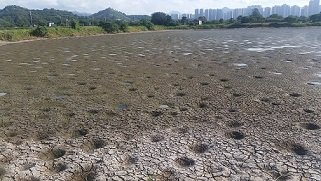
Pond silt on the dried fishpond bottom
References
- Pond Fish Culture, website of the Agriculture, Fisheries and Conservation Department
|
* “Ramsar Convention” is an intergovernmental treaty adopted by many countries in 2 February, 1971 in the Iranian City Ramsar. It came into effect in 1975. The Convention provides the framework both for local action and international collaboration in the conservation and well use of wetland resources. China formally implements the regulation set out in the Convention on 31 July, 1992. Currently, there are 49 Ramsar sites, including the “Mai Po Inner Deep Bay Ramsar Site” in the country. |
**According to the “Ramsar Convention”, wetland includes marshes, bogs or peatland and coastal area that have a water depth of less than 6 m during low tide. Wetland can be natural or man-made, permanent or temporary, stagnant or flowing; the water may be fresh water, sea water or a mixture of the two. |


